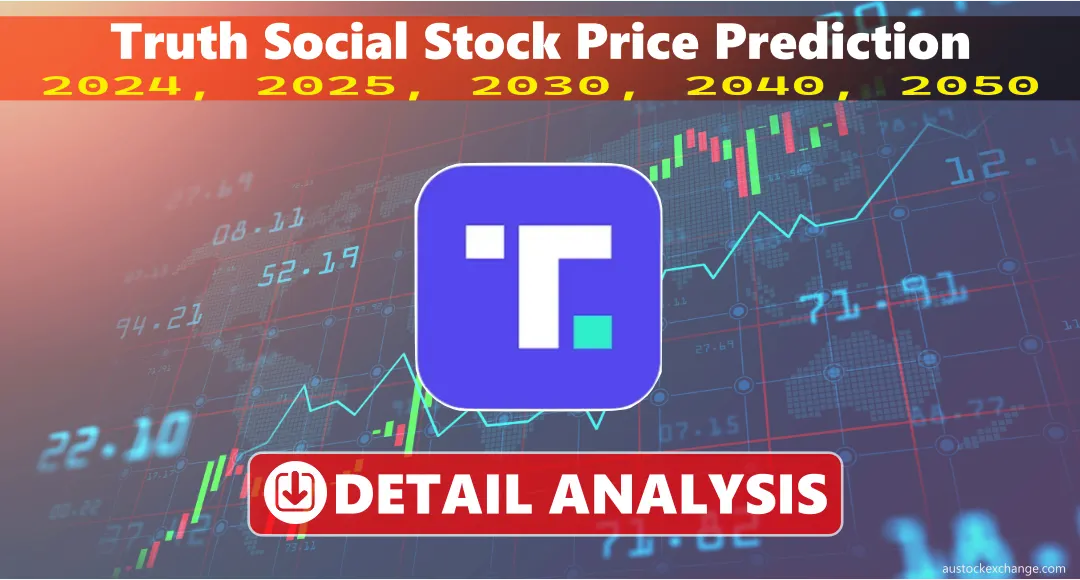MARA Stock | Stock Price Prediction 2025 2050 (Detailed Analysis)
Marathon Digital Holdings Inc. (NASDAQ: MARA) is receiving attention in the constantly changing digital assets and blockchain technology world. Marathon Digital Holdings, a prominent cryptocurrency mining and digital asset technology business, offers a unique cryptocurrency investment opportunity.
In this post, we will analyze MARA stock’s growth potential and project its stock price for 2024, 2025, 2030, 2040, and 2050.
What is Marathon Digital Holdings Inc. NASDAQ: MARA?
Marathon Digital Holdings Inc. is a Las Vegas-based cryptocurrency mining and digital asset technology firm. The startup mines Bitcoin using a cutting-edge data centre and mining equipment. Marathon Digital Holdings wants to use its blockchain and cryptocurrency mining skills to provide novel digital asset solutions.
MARA Stock Price Prediction 2025
In 2025, its stock price would be $22.84, as per our analysis.
By our prediction, its stock price would be between $7.44 and $22.84 in 2025.
| Year | Minimum Price ($) | Maximum Price ($) |
| 2025 | $7.44 | $22.84 |
| Month | Minimum Price ($) | Maximum Price ($) |
| January | $16.40 | $21.18 |
| February | $12.05 | $18.30 |
| March | $11.28 | $16.24 |
| April | $8.16 | $16.90 |
| May | $7.68 | $17.56 |
| June | $7.44 | $18.10 |
| July | $10.84 | $18.87 |
| August | $12.54 | $19.10 |
| September | $13.74 | $19.54 |
| October | $14.58 | $20.84 |
| November | $16.68 | $21.41 |
| December | $18.68 | $22.84 |
MARA Stock Price Prediction 2026
In 2026, its stock price would be $38.12, as per our analysis.
By our prediction, its stock price would be between $18.68 to $38.12 in 2026.
| Year | Minimum Price ($) | Maximum Price ($) |
| 2026 | $18.68 | $38.12 |
Stock Price Prediction 2027
In 2027, its stock price would be $54.11, as per our analysis.
By our prediction, its stock price would be between $37.26 to $54.11 in 2027.
| Year | Minimum Price ($) | Maximum Price ($) |
| 2027 | $37.26 | $54.11 |
Stock Price Prediction 2028
In 2028, its stock price would be $70.44, as per our analysis.
By our prediction, its stock price would be between $53.08 to $70.44 in 2028.
| Year | Minimum Price ($) | Maximum Price ($) |
| 2028 | $53.08 | $70.44 |
Stock Price Prediction 2029
In 2029, its stock price would be $87.63, as per our analysis.
By our prediction, its stock price would be between $69.24 to $87.63 in 2029.
| Year | Minimum Price ($) | Maximum Price ($) |
| 2029 | $69.24 | $87.63 |
MARA Stock Price Prediction 2030
In 2030, its stock price would be $105.00, as per our analysis.
By our prediction, its stock price would be between $86.43 and $105.00 in 2030.
| Year | Minimum Price ($) | Maximum Price ($) |
| 2030 | $86.43 | $105.00 |
Stock Price Prediction 2040
In 2040, its stock price would be $245.45, as per our analysis.
By our prediction, its stock price would be between $226.41 to $245.45 in 2040.
| Year | Minimum Price ($) | Maximum Price ($) |
| 2040 | $226.41 | $245.45 |
Stock Price Prediction 2050
In 2050, its stock price would be $397.93, as per our analysis.
By our prediction, its stock price would be between $371.84 to $397.93 in 2050.
| Year | Minimum Price ($) | Maximum Price ($) |
| 2050 | $371.84 | $397.93 |
Price Summary
| Year | Minimum Price ($) | Maximum Price ($) |
| 2025 | $7.44 | $22.84 |
| 2026 | $18.68 | $38.12 |
| 2027 | $37.26 | $54.11 |
| 2028 | $53.08 | $70.44 |
| 2029 | $69.24 | $87.63 |
| 2030 | $86.43 | $105.00 |
| 2040 | $226.41 | $245.45 |
| 2050 | $371.84 | $397.93 |
Is MARA Stock Good to Buy? (Bull Case & Bear Case)
Bull Case:
- Marathon Digital Holdings may profit from rising demand for mining operations and associated services as Bitcoin acceptance grows.
- Marathon Digital Holdings is growing its mining operations by increasing computer power and hashing, setting it for growth.
- Blockchain, digital asset management, and finance solutions are the areas the business is researching outside mining.
- Marathon Digital Holdings may have an edge against new Bitcoin miners as an early entry, solidifying its market position.
Bear Case:
- Marathon Digital Holdings’ profitability and growth may suffer from cryptocurrency market downturns or governmental crackdowns.
- Marathon Digital Holdings may encounter bigger competitors or disruptive technology that outdated its mining operations in the competitive cryptocurrency mining market.
- Due to legislative changes or tighter constraints, Marathon Digital Holdings’ business model may be in danger.
- Cryptocurrency mining’s high energy usage and environmental effects may raise attention and governmental restrictions.
Key Details About MARA
- Headquarters: Las Vegas, Nevada, United States
- Founded: 2010
- CEO: Fred Thiel
- Employees: Approximately 30 (as of 2022)
- Revenue: $117.8 million (FY 2022)
- Net Loss: $197.8 million (FY 2022)
- Market Capitalization: Approximately $1.2 billion (as of April 2024)
MARA Financial (Balance Sheet)
- Total Assets: $1.3 billion (FY 2022)
- Total Liabilities: $784.3 million (FY 2022)
- Total Equity: $518.5 million (FY 2022)
- Cash and Cash Equivalents: $79.0 million (FY 2022)
- Long Term Debt: $690.5 million (FY 2022)
Key Performance Indicators
- Revenue Growth (YoY): 158.9% (FY 2022)
- Net Loss: $197.8 million (FY 2022)
- Operating Margin: 157.8% (FY 2022)
- Return on Equity (ROE): 38.1% (FY 2022)
- Bitcoin Equivalent Mined: 3,197 (FY 2022)
Comparison with Listed Peers
To evaluate Marathon Digital Holdings’ position in the industry, compare its performance to that of other prominent cryptocurrency mining and blockchain technology firms. Marathon Digital Holdings’ important indicators compared to its listed peers:
| Company | Market Cap | Revenue | Net Income/Loss | Operating Margin | ROE |
| Marathon Digital Holdings (MARA) | $1.2 billion | $117.8M | $197.8M | 157.8% | 38.1% |
| Riot Blockchain | $891.7 million | $259.2M | $126.6M | 53.5% | 44.3% |
| Hut 8 Mining | $281.3 million | $134.6M | $160.2M | 100.7% | 83.2% |
| Bitfarms | $154.6 million | $174.6M | $27.2M | 13.2% | 16.2% |
Positive & Negative Factors to Invest in MARA

Positive Factors:
- Marathon Digital Holdings may profit from rising demand for mining operations and associated services as Bitcoin acceptance grows.
- Marathon Digital Holdings is growing its mining operations by increasing computer power and hashing, setting it for growth.
- Blockchain, digital asset management, and finance solutions are the areas the business is researching outside mining.
- Marathon Digital Holdings may have an edge against new Bitcoin miners as an early entry, solidifying its market position.
Negative Factors:
- Marathon Digital Holdings’ profitability and growth may suffer from cryptocurrency market downturns or governmental crackdowns.
- Marathon Digital Holdings may encounter bigger competitors or disruptive technology that outdated its mining operations in the competitive cryptocurrency mining market.
- Due to legislative changes or tighter constraints, Marathon Digital Holdings’ business model may be in danger.
- Cryptocurrency mining’s high energy usage and environmental effects may raise attention and governmental restrictions.
Conclusion
Marathon Digital Holdings Inc.’s stock offers a unique buy in the fast-growing cryptocurrency and blockchain sectors. Marathon Digital Holdings can capitalize on the increased use of digital assets and demand for mining services as a prominent cryptocurrency miner. Investors should weigh the bull and bear arguments, the company’s financial performance, and the hazards of the volatile and fast-changing cryptocurrency industry. Investing in MARA entails balancing this creative and forward-thinking organization’s risks and advantages.








